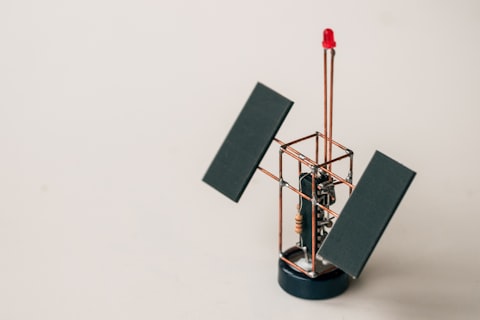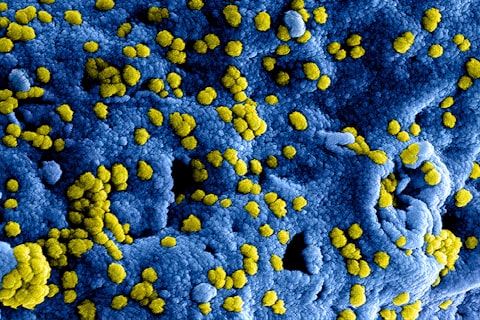Electrical Circuits Through Superconductors
Electrical Circuits Through Superconductors
Superconductors have revolutionized the field of electrical
engineering by offering zero electrical resistance and unique properties
that enhance the efficiency and performance of electrical circuits. In
this article, we will explore the basics of superconductivity, the types
of superconductors, applications of superconductors in electrical
circuits, challenges and limitations, future prospects, and the overall
impact of superconductors on modern electrical systems.
I. Introduction
Superconductors are materials that exhibit zero electrical resistance when cooled below a critical temperature. This remarkable property allows for the efficient flow of electrical current without any energy loss, making superconductors highly desirable for various electrical applications.
II. Basics of Superconductivity
Zero Electrical Resistance
One of the defining characteristics of superconductors is their ability to conduct electricity without any resistance, leading to the efficient transmission of electrical power.
Meissner Effect
The Meissner effect, observed in superconductors, expels magnetic fields from their interior, making them ideal for applications requiring magnetic shielding.
Critical Temperature
Each superconductor has a critical temperature below which it exhibits superconducting properties. Maintaining this temperature is crucial for sustaining superconductivity.
III. Types of Superconductors
Type I Superconductors
Type I superconductors exhibit complete diamagnetic behavior and expel magnetic fields entirely from their interior.
Type II Superconductors
Type II superconductors can exist in a mixed state, allowing magnetic flux to penetrate certain regions while maintaining superconductivity in others.
High-Temperature Superconductors
High-temperature superconductors, discovered in the late 1980s, operate at relatively higher temperatures compared to conventional superconductors, simplifying cooling requirements.
IV. Applications of Superconductors in Electrical Circuits
Magnetic Levitation Trains
Superconducting magnets enable magnetic levitation trains to float above the tracks, reducing friction and increasing speed and efficiency.
MRI Machines
Superconducting coils in MRI machines produce strong magnetic fields for detailed imaging, enhancing diagnostic capabilities in healthcare.
Superconducting Quantum Interference Devices (SQUIDs)
SQUIDs utilize superconducting loops to detect extremely weak magnetic fields, making them valuable tools in scientific research and medical diagnostics.
V. Challenges and Limitations
Cooling Requirements
Maintaining superconducting temperatures can be energy-intensive, requiring cryogenic cooling systems that add complexity and cost to applications.
Fabrication Costs
The production of superconducting materials and devices can be expensive, limiting their widespread adoption in commercial applications.
Current-Carrying Capacity
Superconductors have limits on the amount of current they can carry before transitioning to a normal state, posing challenges for high-power applications.
VI. Future Prospects
Advancements in High-Temperature Superconductors
Ongoing research aims to develop superconductors that operate at even higher temperatures, reducing cooling requirements and expanding their practicality.
Potential for Widespread Use in Power Grids
Superconductors show promise for enhancing the efficiency and reliability of power transmission and distribution systems, paving the way for a more sustainable energy future.
VII. Conclusion
In conclusion, superconductors play a vital role in modern electrical circuits, offering unparalleled efficiency and performance benefits. While challenges such as cooling requirements and fabrication costs persist, ongoing research and advancements in high-temperature superconductors hold promise for overcoming these limitations. The integration of superconductors into mainstream electrical systems has the potential to revolutionize power transmission, transportation, and healthcare technologies, ushering in a new era of innovation and sustainability in the field of electrical engineering.
Electrical Circuits Through Superconductors
Keywords
Superconductors Electrical Resistance Meissner Effect Critical Temperature Magnetic Levitation MRI SQUIDs High-Temperature Superconductors
Introduction to Superconductivity
Superconductors are pivotal in electrical engineering, offering no resistance and enhancing circuit efficiency. We delve into superconductivity basics, superconductor types, their applications, challenges, future prospects, and their impact on electrical systems.
Images


Unveiling the Basics of Superconductivity
Superconductors are defined by zero resistance, the Meissner effect, and a critical temperature for maintaining their unique properties.
Figures
Key Concepts of Superconductivity:
Exploring Types of Superconductors
From Type I to high-temperature superconductors, each has unique characteristics and applications.
Figures
Superconductor Classification:
Superconductors in Action: Electrical Circuit Applications
Superconductors are integral to magnetic levitation trains, MRI machines, and SQUIDs, enhancing transportation, healthcare, and research.
Figures
Applications of Superconductors:
Addressing the Challenges and Limitations
Cooling, costs, and current capacity are significant hurdles in the adoption of superconductors.
Figures
Challenges of Superconductivity:
The Horizon of Superconductivity
Research in high-temperature superconductors and their potential in power grids signal a bright future.
Figures
Future Prospects of Superconductors:
Conclusion: The Superconductive Transformation
Superconductors offer unmatched benefits in electrical circuits, with research paving the way for overcoming current challenges and broadening their use.
Images





تعليقات
إرسال تعليق